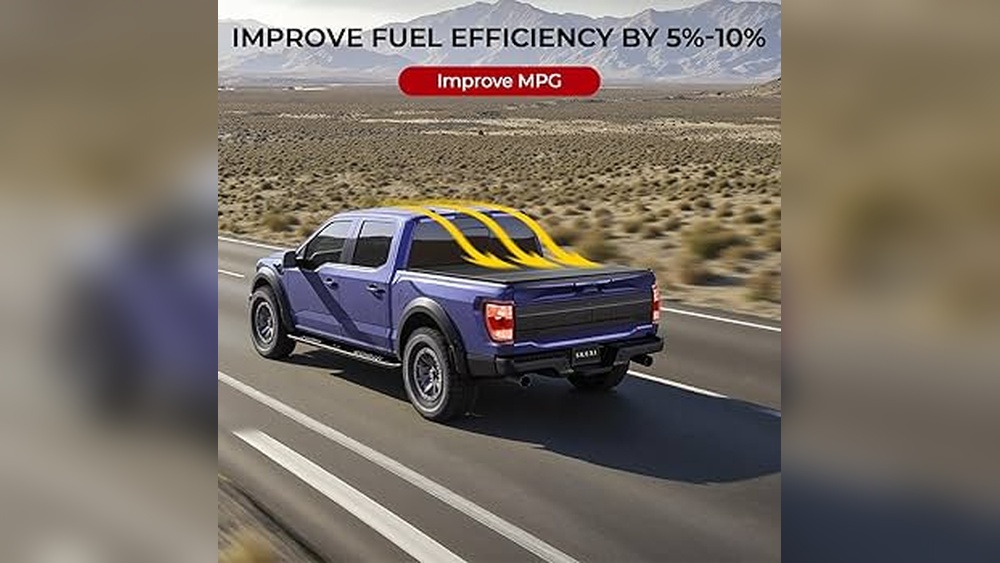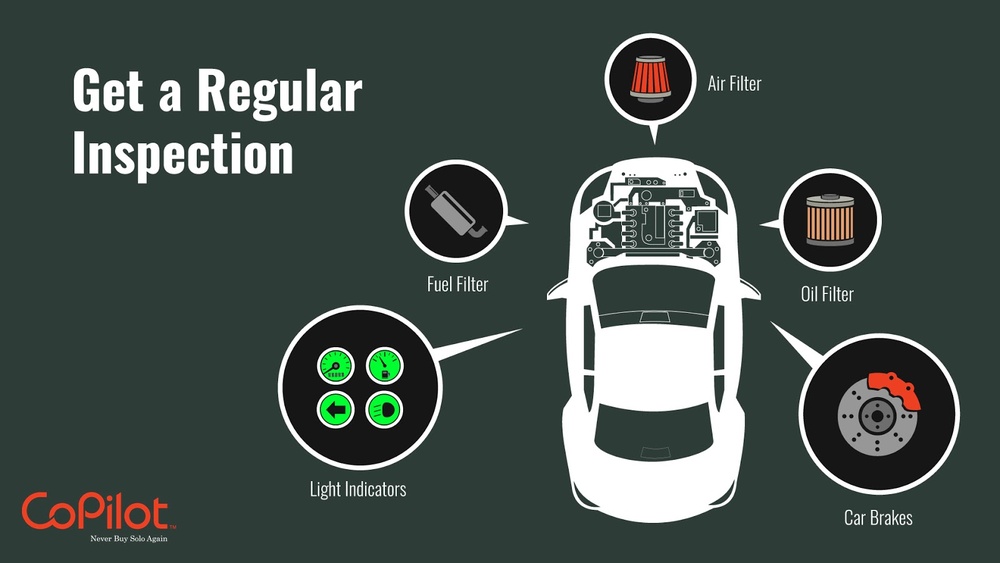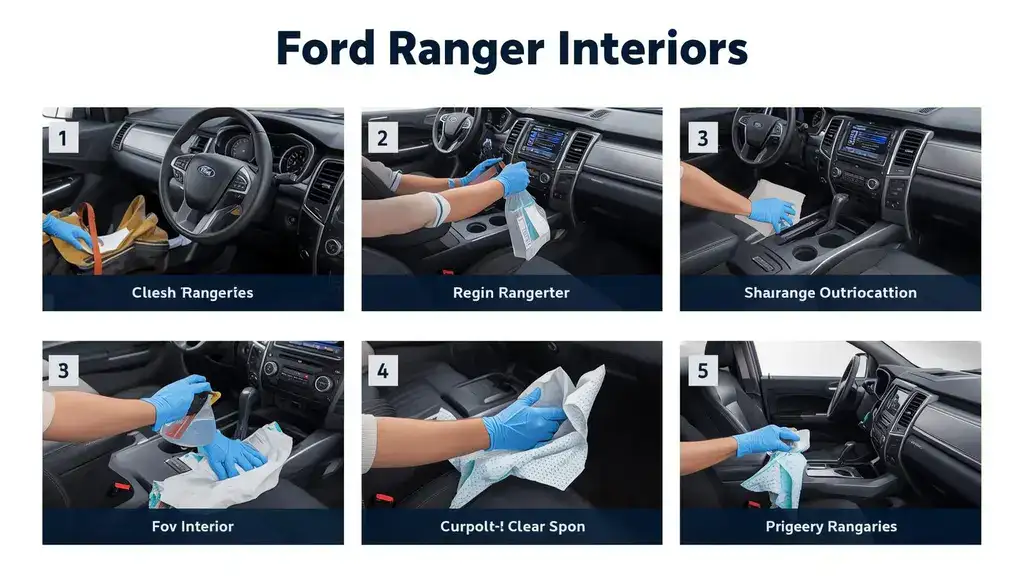If you own a Ranger truck, you know how important it is to keep it running smoothly. But do you know the best times to service your truck to avoid costly repairs and keep it performing at its best?
Understanding the recommended service intervals for your Ranger truck can save you time, money, and stress. You’ll discover exactly when and what to check on your vehicle to ensure it stays reliable and safe on the road. Keep reading to learn how to protect your investment and enjoy every drive with confidence.

Credit: www.actionps.com
Engine Oil And Filter Change
Changing the engine oil and filter is a key part of keeping your Ranger truck running well. Oil keeps the engine parts moving smoothly and stops damage from dirt and heat. The filter cleans the oil, catching tiny bits that can wear out the engine. Regular oil and filter changes help your truck last longer and work better.
Frequency For Different Models
Different Ranger models need oil changes at different times. Most newer models suggest every 7,500 miles or six months. Older models may need changes every 3,000 to 5,000 miles. Always check the owner’s manual for the exact schedule. Driving conditions like heavy loads or dusty roads can mean more frequent changes.
Choosing The Right Oil
Picking the right oil is important for engine health. Use the oil grade listed in the manual. Synthetic oils often work better in extreme temperatures. Conventional oils are fine for regular driving. Avoid mixing oil types. Fresh, clean oil helps your engine run smooth and saves fuel.
Signs You Need An Oil Change
Dark, dirty oil on the dipstick shows it’s time to change. Engine noise or knocking can mean low oil quality. A burning smell inside the truck is a warning. The oil change light on the dashboard also signals a change. Regular checks avoid costly engine repairs later.
Tire Maintenance
Proper tire maintenance keeps your Ranger truck safe and efficient. Tires wear out unevenly without care. Regular checks extend tire life and improve fuel economy. Stay ahead by following a routine.
Rotation Schedule
Rotate tires every 6,000 to 8,000 miles. This helps even out wear on all tires. Front tires often wear faster due to steering. Rotating tires balances this wear. It improves handling and prevents early tire replacement.
Checking Tire Pressure
Check tire pressure at least once a month. Use a reliable pressure gauge for accuracy. Underinflated tires waste fuel and wear unevenly. Overinflated tires reduce grip and comfort. Keep pressure at the level listed in your owner’s manual.
Tread Wear Inspection
Inspect tread depth regularly to avoid unsafe driving. Tires with shallow tread lose traction, especially on wet roads. Use a tread depth gauge or a simple penny test. Replace tires if tread is below 2/32 inch. This ensures your Ranger maintains good road grip.
Brake System Care
Proper brake system care is vital for Ranger trucks. It ensures safety and maintains vehicle performance. Regular checks help spot problems early. This keeps driving smooth and safe.
Brake Pad Replacement Timing
Brake pads wear down over time. Replace them every 30,000 to 70,000 miles. Check the owner’s manual for exact timing. Driving habits and road conditions affect pad life. Inspect pads regularly to avoid damage to rotors.
Fluid Level Checks
Brake fluid transfers force to your brakes. Check fluid levels monthly. Low fluid can cause brake failure. Use the fluid type recommended in the manual. Change brake fluid every two years to keep it fresh.
Warning Signs Of Brake Issues
Listen for squeaking or grinding noises. These sounds may mean worn brake pads. Notice if the brake pedal feels soft or sinks. A pulling truck during braking signals a problem. Address these signs quickly to prevent accidents.
Transmission Service
Transmission service is vital for the smooth performance of your Ranger truck. It keeps the transmission system healthy and extends its life. Regular checks and maintenance prevent costly repairs and improve driving safety.
Transmission fluid and filters need regular attention. Dirty fluid or clogged filters can cause shifting problems and damage. Understanding the service intervals helps maintain your vehicle’s value and reliability.
Fluid Change Intervals
Changing the transmission fluid at the right time is crucial. For most Ranger trucks, fluid change is recommended every 30,000 to 60,000 miles. Severe driving conditions like towing or stop-and-go traffic may require more frequent changes. Clean fluid ensures smooth gear shifts and prevents overheating.
Filter Replacement
The transmission filter traps dirt and debris. Replacing the filter helps keep the fluid clean and the system working well. It is usually done with the fluid change. A clogged filter can cause slipping or rough shifting, leading to bigger problems.
Common Transmission Problems
Ignoring transmission service can cause issues like slipping gears, delayed shifting, or strange noises. Fluid leaks and overheating are also common signs. Early detection and regular service reduce the risk of transmission failure and expensive repairs.
Cooling System Checks
The cooling system in your Ranger truck stops the engine from overheating. Checking it regularly keeps your truck running well. Cooling system checks help avoid costly repairs and engine damage. Simple inspections can find small problems early.
Coolant Flush Timing
Flush the coolant every 30,000 miles or every 2 years. Old coolant loses its ability to cool the engine. Flushing removes rust and dirt inside the system. Use the right coolant type made for Ranger trucks. Fresh coolant keeps the engine at the right temperature.
Radiator Inspection
Look at the radiator for leaks or damage every 15,000 miles. Check for bent fins or blockages that stop airflow. Clear dirt and bugs off the radiator surface. Tighten any loose hoses connected to the radiator. A clean, intact radiator works better to cool your engine.
Preventing Overheating
Overheating can cause engine failure and costly repairs. Check the temperature gauge often during drives. Fix any leaks or low coolant levels immediately. Replace worn water pumps and thermostat parts on time. Keeping the cooling system in good shape stops overheating risks.

Credit: www.cornerstoneford.com
Battery Maintenance
Battery maintenance keeps your Ranger truck running smoothly. A healthy battery means reliable starts and fewer breakdowns. Regular checks prevent unexpected failures and save you money on repairs.
Simple tasks like cleaning and testing extend battery life. Following replacement guidelines helps avoid sudden power loss. Let’s explore key steps to care for your truck’s battery.
Testing Battery Health
Test your battery every few months. Use a voltmeter or a battery tester for accurate results. A fully charged battery should read about 12.6 volts or more. Lower readings mean the battery needs charging or replacement. Testing helps catch problems early.
Cleaning Terminals
Dirty terminals cause poor connections and starting issues. Clean terminals with a mixture of baking soda and water. Use a wire brush to remove corrosion gently. Dry the terminals completely before reconnecting. Apply a thin layer of petroleum jelly to prevent rust. Clean terminals improve battery performance.
Replacement Guidelines
Replace your battery every 3 to 5 years. Extreme weather can shorten battery life. Look for signs like slow starts or dim lights. Consult your truck’s manual for specific recommendations. Timely replacement avoids breakdowns and keeps your truck dependable.
Suspension And Steering
The suspension and steering system of a Ranger truck plays a crucial role in safety and ride comfort. It keeps the truck stable on uneven roads and helps maintain control. Regular maintenance ensures these parts work well and last longer.
Inspection Frequency
Check suspension and steering every 12,000 miles or once a year. More frequent checks are needed for rough use or off-road driving. Look for loose parts, leaks, and unusual noises during inspections.
Signs Of Wear
Watch for uneven tire wear or a pulling feeling while driving. Excessive bouncing or vibrations can mean worn shocks or struts. Steering that feels loose or stiff may indicate worn steering components.
Lubrication Points
Grease the ball joints, tie rod ends, and control arm bushings regularly. Proper lubrication reduces friction and prevents early wear. Use the recommended grease and follow the truck’s service guide.
Air Filter Replacement
The air filter in your Ranger truck keeps dust and dirt from entering the engine. It helps the engine breathe clean air. Clean air is important for good engine performance and fuel efficiency. Replacing the air filter regularly protects your engine and saves money on repairs.
Recommended Intervals
Ranger trucks usually need an air filter change every 12,000 to 15,000 miles. Check your owner’s manual for exact numbers. If you drive in dusty or dirty areas, replace the filter more often. A clogged air filter can reduce engine power and increase fuel use.
Effects On Performance
A clean air filter improves engine power and fuel efficiency. It helps the engine run smoothly. A dirty filter blocks airflow, causing poor acceleration and rough idling. It can also increase emissions and wear on engine parts. Replacing the filter keeps your truck running strong.
Diy Vs Professional Service
Changing the air filter yourself is simple and saves money. Most Ranger trucks have easy-to-access filters. Use the right replacement part and follow the manual. Professional service can check other parts and clean the air intake system. Choose based on your comfort and tools available.
Spark Plug Service
Spark plug service is important for your Ranger truck’s engine health. Spark plugs ignite the fuel-air mix inside the engine. Good plugs ensure smooth starts and steady power. Worn plugs cause problems that reduce engine performance. Checking and replacing spark plugs regularly keeps your truck running well.
Replacement Schedule
Most Ranger trucks need spark plug changes every 30,000 to 60,000 miles. Check your owner’s manual for exact times. Some models with newer plugs last longer, up to 100,000 miles. Replace plugs sooner if your truck shows any trouble signs. Regular replacement stops bigger engine issues.
Symptoms Of Worn Plugs
Hard starting is a common sign of bad spark plugs. You may also notice engine misfires or rough idling. Reduced power and poor acceleration can occur too. Your truck might use more fuel than usual. Strange noises or vibrations from the engine can also appear. Watch for these signs to avoid bigger repairs.
Impact On Fuel Efficiency
Worn spark plugs cause incomplete fuel burning. This wastes fuel and lowers miles per gallon. Changing plugs on time improves fuel use. Your engine runs cleaner and smoother. Good plugs help save money on gas over time. Keeping plugs fresh is key for better fuel economy.

Credit: www.d2powersports-greer.com
Scheduled Comprehensive Inspections
Scheduled comprehensive inspections keep your Ranger truck in top shape. These regular checkups find small problems early. This saves money and avoids bigger repairs later.
Following a set schedule helps maintain safety and performance. Every part of the truck gets a careful look. This ensures your vehicle runs smoothly and lasts longer.
Mileage-based Checkups
Check your truck at certain mile points. Common checks happen at 5,000, 15,000, 30,000, and 60,000 miles. Each check covers key parts like brakes, fluids, and engine.
Some tasks repeat often, such as oil changes and tire rotations. Others, like spark plug replacement, happen less often. Stick to the mileage plan for best results.
Professional Vs Self-inspection
Professionals have tools and skills for deep inspections. They spot issues that you might miss. A mechanic can test systems and fix problems quickly.
Self-inspections help catch visible or basic issues. Check tire pressure, fluid levels, and lights. This keeps you aware of your truck’s condition.
Use both methods. Regular self-checks plus professional visits keep your Ranger reliable and safe.
Checklist For Complete Service
A full service covers these parts:
- Engine oil and filter change
- Brake system check
- Tire inspection and rotation
- Fluid levels and leaks
- Battery and electrical system
- Suspension and steering
- Lights and signals
- Air filter replacement
Keep this checklist handy. Follow it each time you service your truck.
Frequently Asked Questions
How Often Should I Change Oil In Ranger Trucks?
Ranger trucks typically need an oil change every 7,500 miles or six months. Regular oil changes keep the engine running smoothly and prevent damage. Always check your owner’s manual for specific recommendations based on your model and driving conditions.
When Is The Best Time For Ranger Truck Tire Rotation?
Tire rotation for Ranger trucks is recommended every 5,000 to 7,000 miles. Rotating tires evenly distributes wear, improves handling, and extends tire life. Follow your vehicle’s maintenance schedule to ensure optimal performance and safety on the road.
How Frequently Should Ranger Truck Brakes Be Inspected?
Brake inspections for Ranger trucks are advised every 10,000 to 15,000 miles. Regular checks help detect wear, prevent brake failure, and maintain safety. If you notice unusual noises or reduced braking power, have the brakes inspected immediately.
What Is The Recommended Interval For Ranger Truck Transmission Service?
Transmission service for Ranger trucks is usually recommended every 30,000 to 60,000 miles. This includes fluid changes and system checks to ensure smooth shifting and prevent costly repairs. Follow your owner’s manual for precise intervals and service details.
Conclusion
Regular service keeps your Ranger truck running strong. Follow the recommended intervals to avoid problems. Check oil, brakes, and tires often for safety. Timely maintenance saves money and extends your truck’s life. Don’t skip important checks, even if the truck feels fine.
A well-kept Ranger handles better and lasts longer. Simple care steps help you avoid costly repairs. Stay on schedule and enjoy a smooth ride every time. Taking small actions today leads to big benefits tomorrow. Keep your truck ready for any road ahead.
Disclosure: As an Amazon Associate, I may earn from qualifying purchases at no extra cost to you. Amazon and the Amazon logo are trademarks of Amazon.com, Inc, or its affiliates.
- Amazon, Amazon Prime, the Amazon logo and Amazon Prime logo are trademarks of Amazon. com, Inc. or its affiliates.

I am Sadman, the founder of CarSensorHub.com, where I share my passion for cars and technology. I specialize in writing detailed reviews and helpful guides on car gadgets, accessories, safety tools and many more. My mission is to help car owners discover the best products and tips to improve their driving experience and stay safe on the road.



